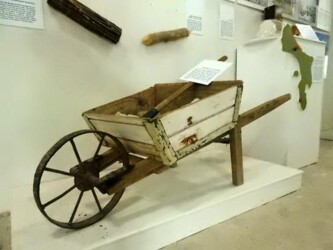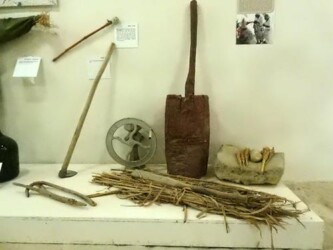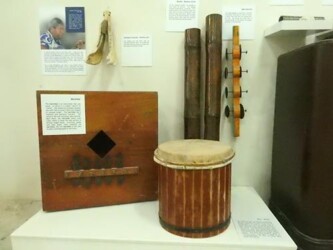Mangazina di Rei, The King’s Storehouse, illustrates Bonaire’s history.
Mangazina di Rei is one of the oldest stone structures on Bonaire from 1820. It is about the same age as Fort Oranje, which stands guard at the harbor in Kralendijk, the capital of Bonaire. It was used by the government (Rei–the King) to store provisions for the government slaves and tools for farming. Every Saturday afternoon, these slaves would meet at the Mangazina to receive their weekly provisions.
In addition to the Rincon Mangazina, there is a second storehouse located in Amboina, one of Bonaire’s neighborhoods.
Cultural Discovery Tours by Mangazina di Rei
Mangazina di Rei hosts Culture Discovery Tours, available Monday through Friday at either 9:00, 10:00, or 11:00 AM or 2:00 or 3:00 PM. The tours offer a fascinating way to immerse in Bonaire’s local culture. Entry is $19.00 per person for adults, and children under 13 are $3.00. All proceeds from the tours are directly utilized in the Mangazina’s educational projects.
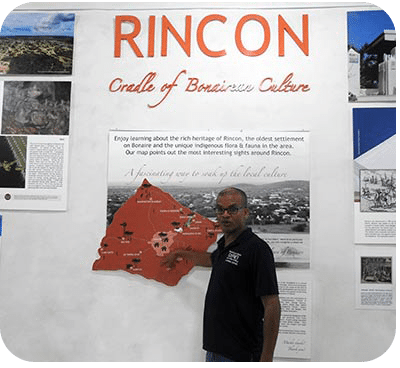
The Rincon Exhibit is an excellent orientation to the area.
The Rincon Exhibit is a wonderful way to get an overview of the rich heritage of Rincon, the oldest settlement on Bonaire. This exhibit also provides a wealth of information on the indigenous flora and fauna. It also provides information on some of the more interesting sights in the Rincon area. The entry fee for the exhibit is $10.00 per person, and it’s open Monday through Friday from 9:00 AM to 4:00 PM. This exhibit is also an excellent orientation to the surrounding areas and is recommended before enjoying the Valley of Rincon Trails (drive, hike, and bike).
Cultural Event “Nos Zjilea”
The Nos Zjilea event combines local arts and crafts, plants and vegetables, and educational presentations. Enjoy the delicious food while listening to some of the best local musicians as they play live at Mangazina di Rei terrace. The entrance is $3.00 per person.
Of course, those that just want to let nature provide a rest-stop to the hustle and bustle of everyday life are free to wander the grounds of the park at no charge. (Monday through Friday 9:00 AM to 4:00 PM.)
Mangazina di Rei’s collection of traditional homes and buildings.
Mangazina di Rei has a wonderful collection of traditional homes and other structures utilized by Bonaire’s early inhabitants. These include:
Kas di Bara (house of mud and twigs):
Kas di bara is a building style that the slaves brought from Africa. This system uses twigs, mud, and a roof covered with grass or cornstalks and is still practiced on that continent. Making a house of bara was a community effort. Neighbors, friends, and family would help one person build his house. First, they would go and chop the twigs in the “mondi” (outback) during the full moon. For the twigs, they would use the kwihi tree and other forms of flexible building material. After constructing the sides, they would build a roof. They called this procedure “kubrimentu di kas” (covering of the house). The coverer was someone specialized in doing this work. Next, they would plaster the sides with white clay. Every neighborhood had pits from which they would get this material. For the clay to stick they would add grass to it. To finish off the house, they would whitewash the walls with kalki (fired coral rock).
Kas di Piedra (stone houses):
Kas di Piedra was more common among poor people. To make the blocks, workers would chop them from pits in the mondi (outback). These were cemented together by using a mixture made from kalki. During the late 1920s, they began to use concrete blocks, making stone houses out of date.
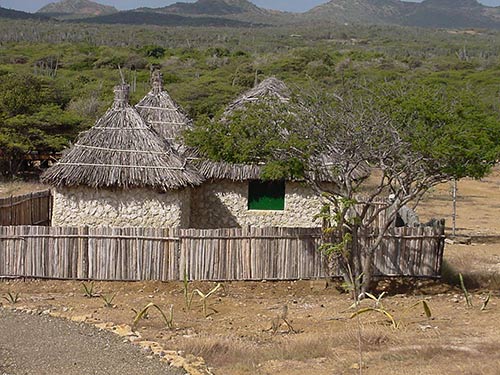
Kas di Tabla (wood houses):
Another typical house on Bonaire in the past was the wooden house, although there were not many. Sometimes, for added protection, they would cover the house’s walls with tin to preserve the wood. The wooden house was also more widely known among the poor people in the old days.
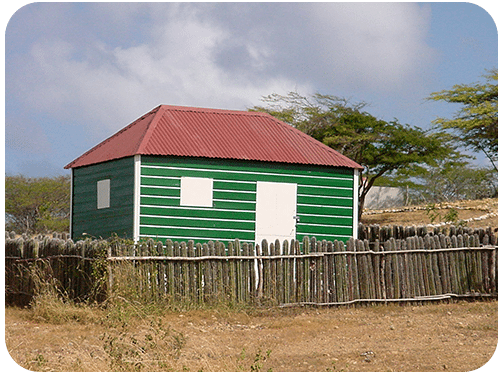
Fornu di Kalki (chalk oven):
Kalki was a very important export product from Bonaire. There was even a supervisor for the chalk ovens in the civil servants’ corps of the West Indian Company and in the Dutch Government on Bonaire. The ingredients to make chalk are wood and coral. One makes a round wooden platform on which the coral stones are piled. There were many different types of wood used in a chalk oven. However, one type, which was always preferred over other types of wood, was palu di sia, because it would make the chalk bind better. It takes one night for a chalk oven to burn completely. Generally, it is lit early in the evening and in the morning the kalki is ready.
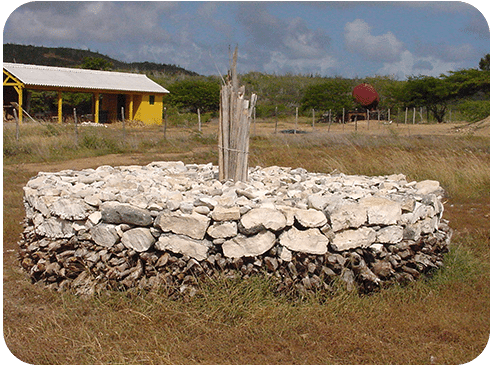
Fornu di Karbon (charcoal oven):
A very popular export from Bonaire in the past was charcoal. This product, a big income producer for the plantations, was mostly exported to Curacao when there were no kerosene or gas stoves. Once these stoves became popular, the production of charcoal came to an end. Different types of wood are used to make charcoal. However, it must be hardwood, as softwood is not appropriate.
Fornu di Sentebibu (aloe oven):
Sentebibu, first imported to the islands in 1840, was another export product from Bonaire. The main markets were England, and the U.S. Aloe was planted on every big farm and plantation. The gel was collected and poured into a big pot and boiled. When the gel began solidifying, it was poured into wooden crates, which were then transported. Many people on the farms and plantations on Bonaire received an income from the production of aloe.


